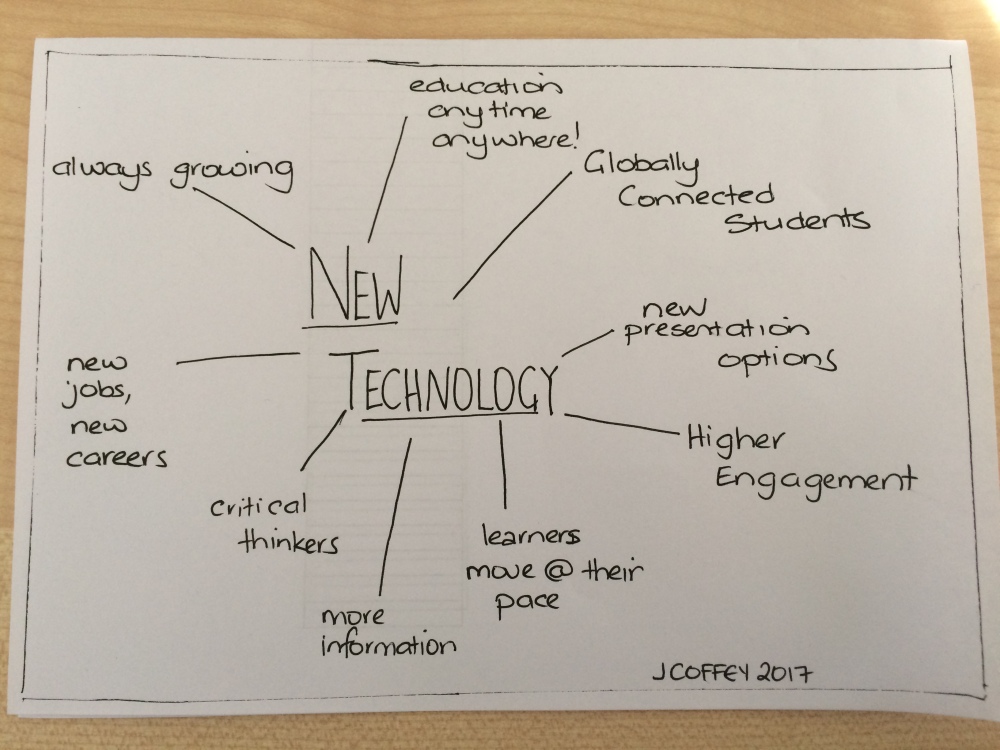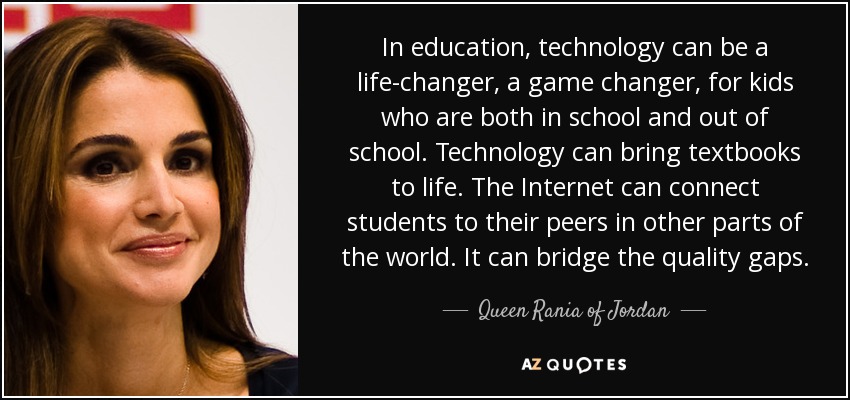As a nerd who avidly watched Star Trek, Quantum Leap, Stargate and anything else science fiction the rise of new technologies has always captured my attention. We all know how scifi shows have actually impacted our advancing technologies and that has finally started to creep into our classrooms. Gone are the OHPs, VHS, and TVs – replaced by computers, projectors, iTunes films and so on.
I grew up in that in-between time. Insert dial up modem sounds, cue real floppy disks and lets play some Doom.
Technology has guided my professional development and framed my teaching. I have been apart of the BYOD programme at Trident and currently spend time helping my fellow teachers up-skill their tech skills.
New technology is not truly a trend but rather a fact of life. With “75% of the global population having access to a mobile phone” we are starting to see how new technologies are influencing children and adults. (KMPG International) We are seeing the impact that this technology is having on students and teachers – especially with regard to how students are learning and how teachers are teaching.
If you look any any classroom you will see students on phones, teachers using laptops and projectors. We have cloud storage, google docs, edmodo, twitter, blogs, websites and much more. It does raise questions…most notably, how effective are we (and our students) in using this new technology?
By itself, new technology has the ability to create independent, connected, global learners but it is the pedagogy behind it that needs to be examined. We can’t just slap a laptop in front of a student (or a teacher for that matter) and expect them to know how to use it to their advantage.

This was my note taking/brainstorming so I thought I’d take a photo and upload it. Just like my students…
I rely on the google suite – classroom, docs, slide etc. I use YouTube, kahoot, twitter, Tumblr, WordPress and much more to help up-skill my teaching and the learning of my students. I connect globally with teachers due to my use of technology.
New technology does raise new concerns – cyber bullying for one and equity is another. There are still so many places in the Bay of Plenty that do not have access to internet and, if we are requiring all students to do work online, we are disadvantaging some of them. We have BYOD classes at school and they are opt in – which means that if you can afford the device you can enter the class so it is more about wealth than need.
We have a responsibility to provide structured but flexible teaching around new technologies and we need to be innovative and integrative. This means that we need to have differentiated PD that helps build teacher skill levels and confidence and we need to work with our students to show them the benefits of using new technology. We also need to teach them how to be critical thinkers and globally aware when it comes to using their devices. Yet, at the same time, we want them to still retain awareness of their own identity.
We cannot shy away from the evolution of technology – even the fear of skynet cannot stop technology developing but we must remember to keep asking the big and small questions…As Catapano mentions we shouldn’t be afraid of using technology but we shouldn’t assume the best about it without asking the critical questions. (Catapano. N.D.)
One last note – the evolution of new technology means that we can teach from anywhere at any time therefore students can learn anywhere at any time … so – why do we still stick to the same four walls and structure from a pre-technological age?
References
Catapano, Jordan. “The Implications Of New Technology In The Classroom”. TeachHUB. N.p., 2017. Web. 11 June 2017.
KPMG International. (2014). Future state 2030: the global megatrends shaping governments. KPMG International Cooperative: USA. Retrieved from https://assets.kpmg.com/content/dam/kpmg/pdf/2014/02/future-state-2030-v3.pdf

I really enjoyed your last comment about the four walls of our classroom. I too often ask myself this question as I run a classroom using Google sites. However, I believe that we especially here in New Zealand still rely on the 9-5 as a work option, therefore the four walls and the 9-3 option of education work because that is the demand from our parents and our society. Once we can allow for more parents to work from home or for the job market to change we will always be stuck between four walls and working 9-3, as “babysitters’ (actively shuddering at the use of that word!).
LikeLike
I totally agree with you, Ruth. My sister has recently moved up and I help look after her girls while she works late hours which is so ridiculous. I love the fact that you highlighted that the job market needs to change – especially as we are constantly told that we are teaching students and training them for jobs that don’t even exist yet.
LikeLike
Thank you for sharing your blog, there are some really interesting points. I’m actually really surprised that your school would run an ‘opt in’ bring your own device classes. The potential for this to discriminate against and / or highlight the poorer students seems worrying. Does the school provide an opportunity to ‘opt in’ and then give financial support for those students with low-income parents? Are these classes teaching the same content as other classes or does this also mean that some students gain access to the opportunity for different learning based on their access to a computer (project / passion based work for example?)
Our school has now been BYOD for the past two years, and it does seem that some aspects of a traditional 9-5 does break down. Students are now expecting to be able to contact their teachers at any time (evenings, weekends included) and they do expect a response – meaning down-time for a teacher has to be carefully managed.
LikeLike
Thanks for your comment Dawn and I agree with you – especially with the point about teachers being on call 24/7 at the moment. I recall being in the hospital and overseas responding to parents and students… I would love some ideas about how you have managed to monitor down time.
LikeLike
Loving this discussion ladies. How do we as teachers manage an ever-encroaching job into our time. I am passionate about my teaching and at the same time, I struggle to maintain effective work-life balance. As a teacher establishing a new Robotics Club at my school, I am managing an over-zealous parent who knows no boundaries and emails during evenings and weekends. As much as I am keen to see the development of the new club, fitting this in around my classroom planning and (English marking Jamie Lee) is quite the challenge.
LikeLike
I totally agree. With all this new technology we find that our time is being consumed. How can we divide our time in the class and at home? I’ve started to have no email checking after six but it is very tempting to pop in and check to see if that student has replied or that parent has responded.
LikeLike
Thank you for sharing your blog. Have thoroughly enjoyed reading it. I agree that the pedagogy of using technology needs to be examined. I feel at times that I do lag behind my kids in terms of using technology and with that comes the need and drive to up skill. The demand to keep up with technology and other areas can be quite overwhelming and sometimes I do not feel equipped. Keeping up with the fast paced advances in technology and the never ending need for instant feedback (colleagues, students, parents) can consume our lives. I definitely think this is a main reason for the imbalance between work and life.
LikeLike